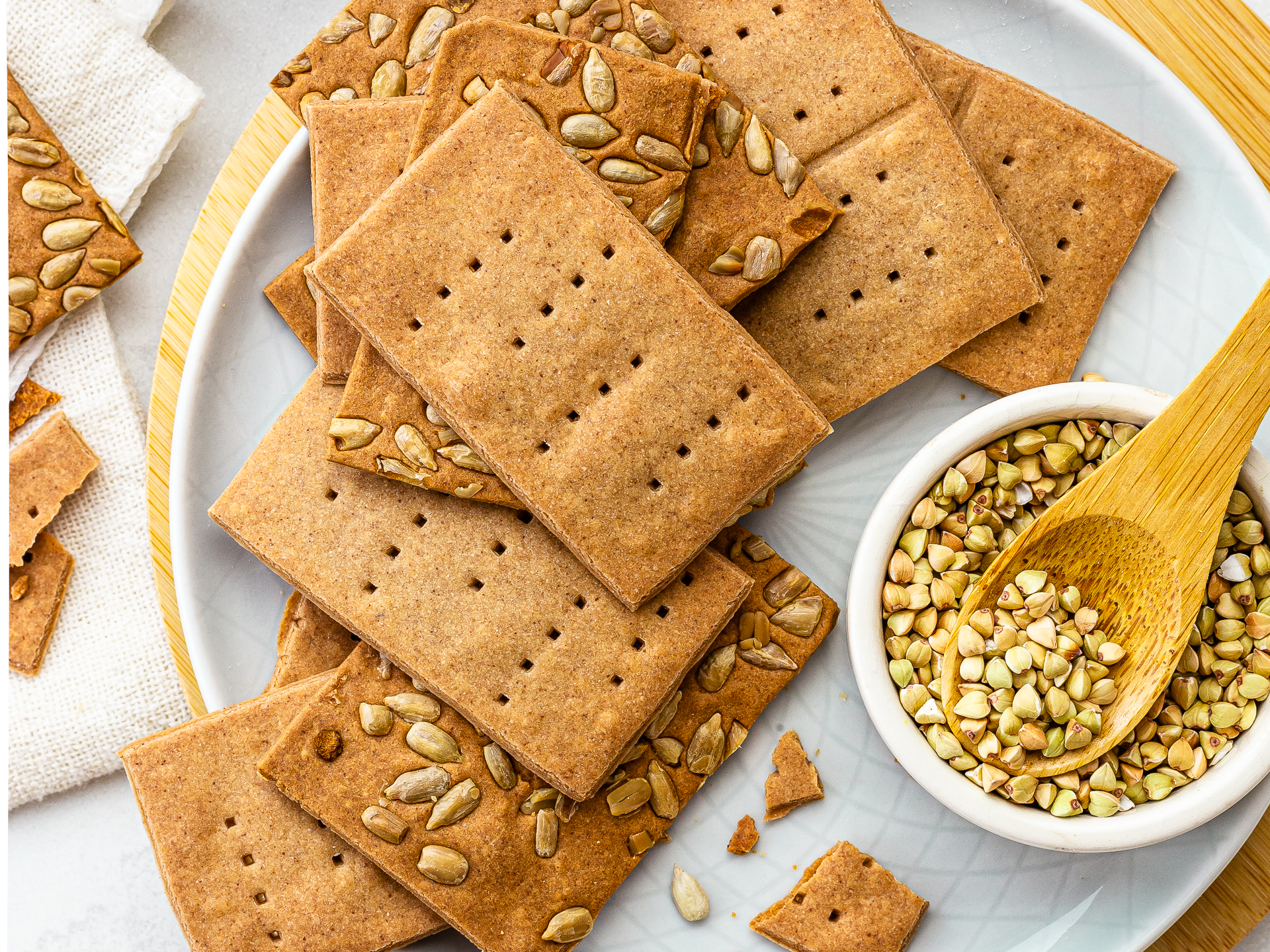Today, we'll show you how to make crackers using buckwheat flour, a naturally gluten-free flour made from ground buckwheat groats.
Preparing crackers at home puts you in control of the ingredients, helping you make a healthier snack than store-bought crackers.
And this buckwheat cracker recipe is as healthy as it gets: rich in fibres and proteins!
Despite its name, buckwheat is not related to wheat. It is a 'pseudo-cereal'—a seed used as a grain—and it contains no gluten.
So, this grain-free cracker recipe is the perfect alternative to wheat crackers, if you can't have gluten or are looking for something new.
These savoury crackers burst with the uniquely nutty, earthy, and roasty flavour of buckwheat — so you don't need many other ingredients to make them tasty!
We just added a little extra virgin olive oil and salt, plus toasted sunflower seed for extra crunch. But you can swap or omit any of these if you like, following our tips below!
Are buckwheat crackers gluten-free?
Yes, crackers made with buckwheat flour are gluten-free, as buckwheat is actually a seed and has no gluten.
Using buckwheat flour for crackers is an excellent way to prepare grain-free, flourless crackers if you’re celiac, sensitive to or avoiding gluten.
Are buckwheat crackers healthy?
One 30-gram (1 oz) serving of buckwheat crackers has 150 calories, 4 grams of proteins, and 3 grams of fibre, making it a healthy snack.
Homemade buckwheat crackers are a healthier alternative to crackers made with white wheat flour as they have:
Three times more fibres
Fewer net carbs
A source of complete proteins
This means crackers with buckwheat flour can help with weight loss as they're more filling and don't spike blood sugars as much.
How do I keep homemade crackers crunchy?
Homemade crackers will stay perfectly crispy for a few hours once baked. After that, they’ll start to lose their crunch if not properly stored.
To keep these buckwheat crackers fresh for up to a week, follow these 4 simple tips:
Leave the crackers to cool completely on a rack to prevent steam from moistening them.
Once cooled, immediately transfer into a glass container like a jar (ideally with an air-tight seal) or tightly wrap in foil.
Don’t use plastic bags or plastic containers, as plastic makes homemade crackers chewy and stale.
Store at room temperature in a cool, dry, dark place, like a cupboard.
What can I serve buckwheat crackers with?
Buckwheat crackers are great for nibbling and go well with dips and spreads like:
hummus or baba ganoush without tahini
mashed avocado or guacamole
nut butter, try this Brazil nut butter or cashew spread with matcha
savoury spreads like this sundried tomato pate or mango kasundi mustard
chutneys, like this Indian plum chutney
How do you make crackers with buckwheat?
Buckwheat crackers are thin, savoury biscuits made with buckwheat flour, water, and salt — sometimes herbs and oil are added for extra flavour.
To make them, the ingredients are kneaded into a dough which is first rolled out into a thin sheet and then cut into cracker shapes before being slowly baked in a low oven until crunchy.
What seasonings and flavours go well in buckwheat crackers?
Buckwheat flour has a distinctly earthy, nutty and slightly bitter taste that pairs well with toasted flavours, strongly aromatic herbs or spices, and rich, salty ingredients.
So, you can make buckwheat crackers even tastier by adding:
Nuts and seeds (toasted) — the best are walnuts, pecans, and hazelnuts or sunflower, sesame seeds and pumpkin seeds as in this seeded spelt crackers recipe
Cheese — try grated cheddar, parmesan, or nutritional yeast
Mustard — spicy dijon or wholegrain mustard as in these mustard crackers.
Aromatic herbs like dried thyme and rosemary
Cumin, caraway seeds or fennel seeds — check these sourdough fennel crackers
Olives — green or kalamata olives
Ingredients
| Buckwheat Flour | 150 g |
| Salt | 1 tsp |
| Extra Virgin Olive Oil | 2 tbsp |
| Water (at room temperature) | 60 mL |
| Toasted Sunflower Seeds (optional) | 3 tbsp |
Step 1
Preheat the oven to 150°C (300°F) static and keep a large baking tray in the oven.
In a bowl, mix the buckwheat flour with salt, then add the olive oil (1).
Using your fingertips, rub the oil into the buckwheat flour until you have a sandy mix (2).
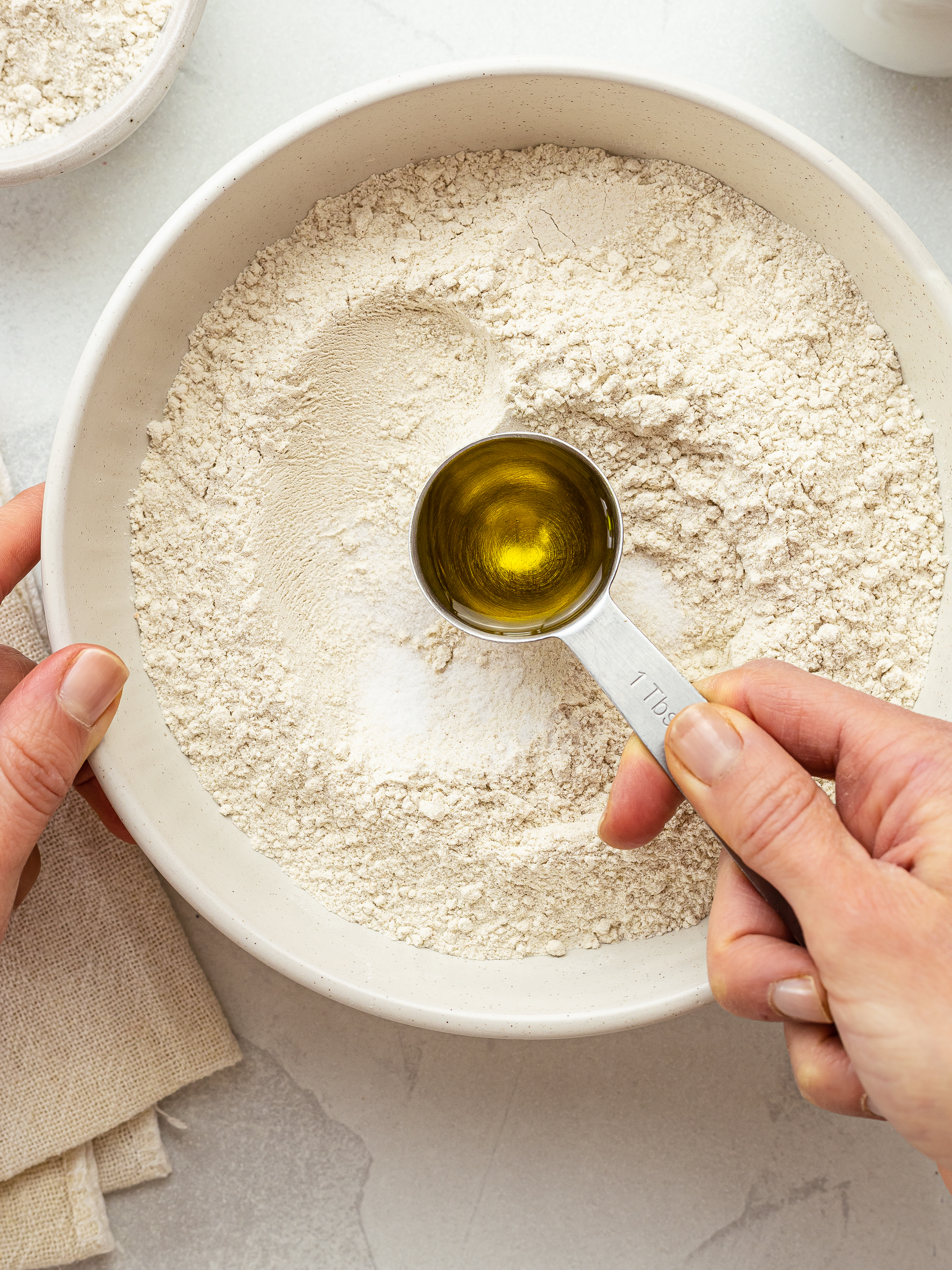
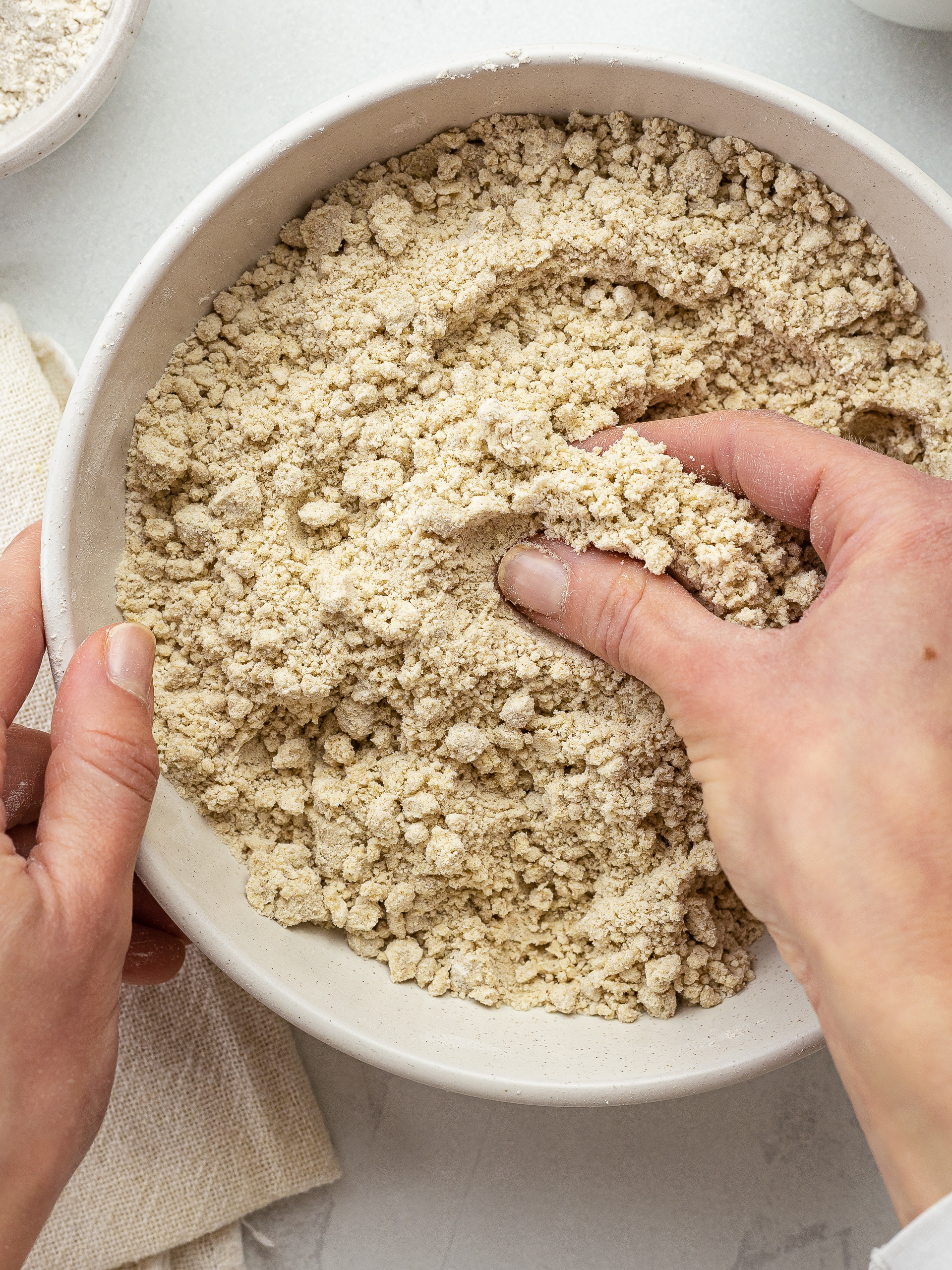
Step 2
Now, pour in the water (1) and mix the ingredients until they form a rough dough.
Then, use your hands to knead the cracker dough until it's smooth, pliable and detaches from the sides of the bowl (2).
Depending on how fine or coarse your buckwheat flour is, you may need more or less water.
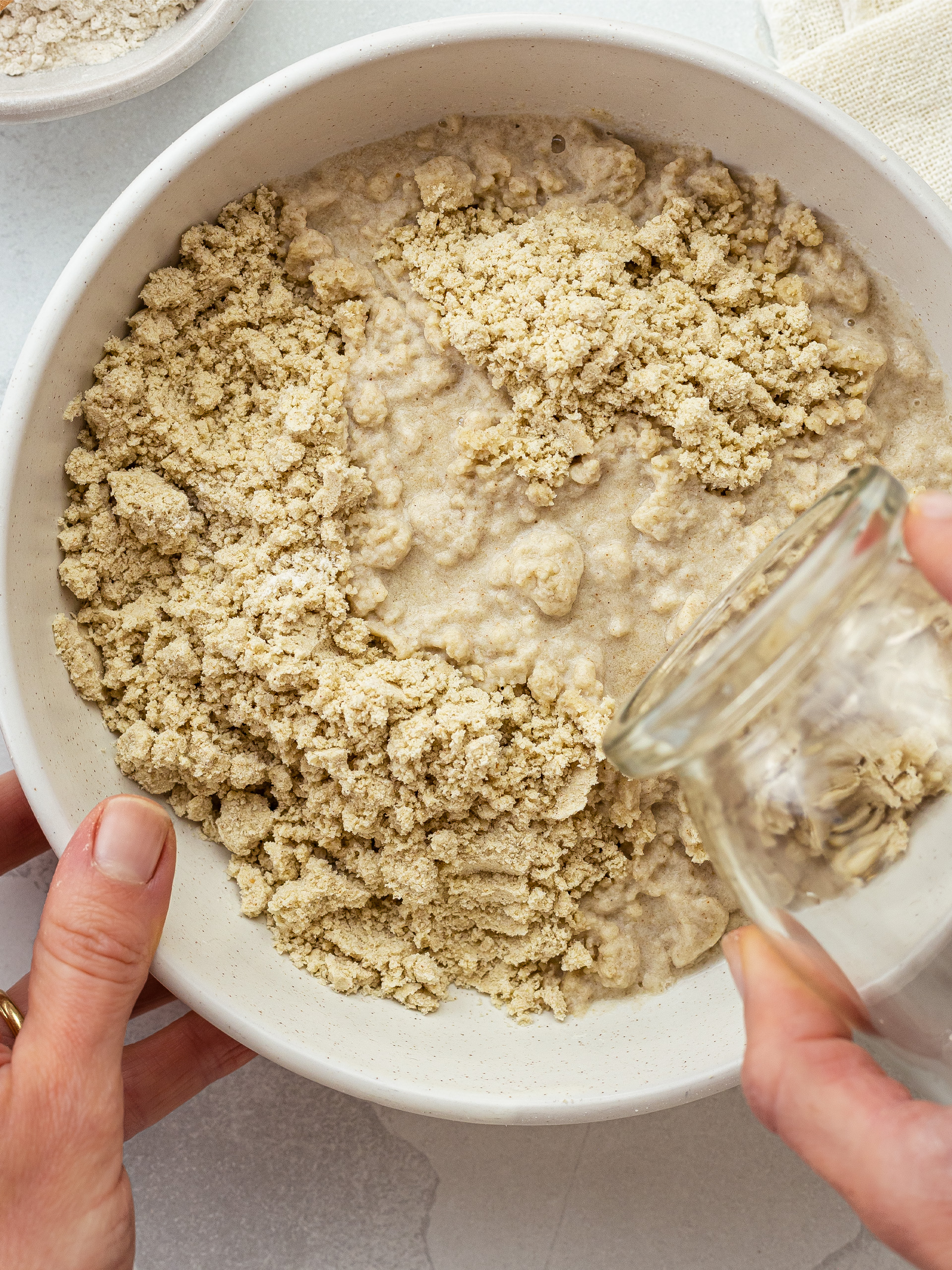
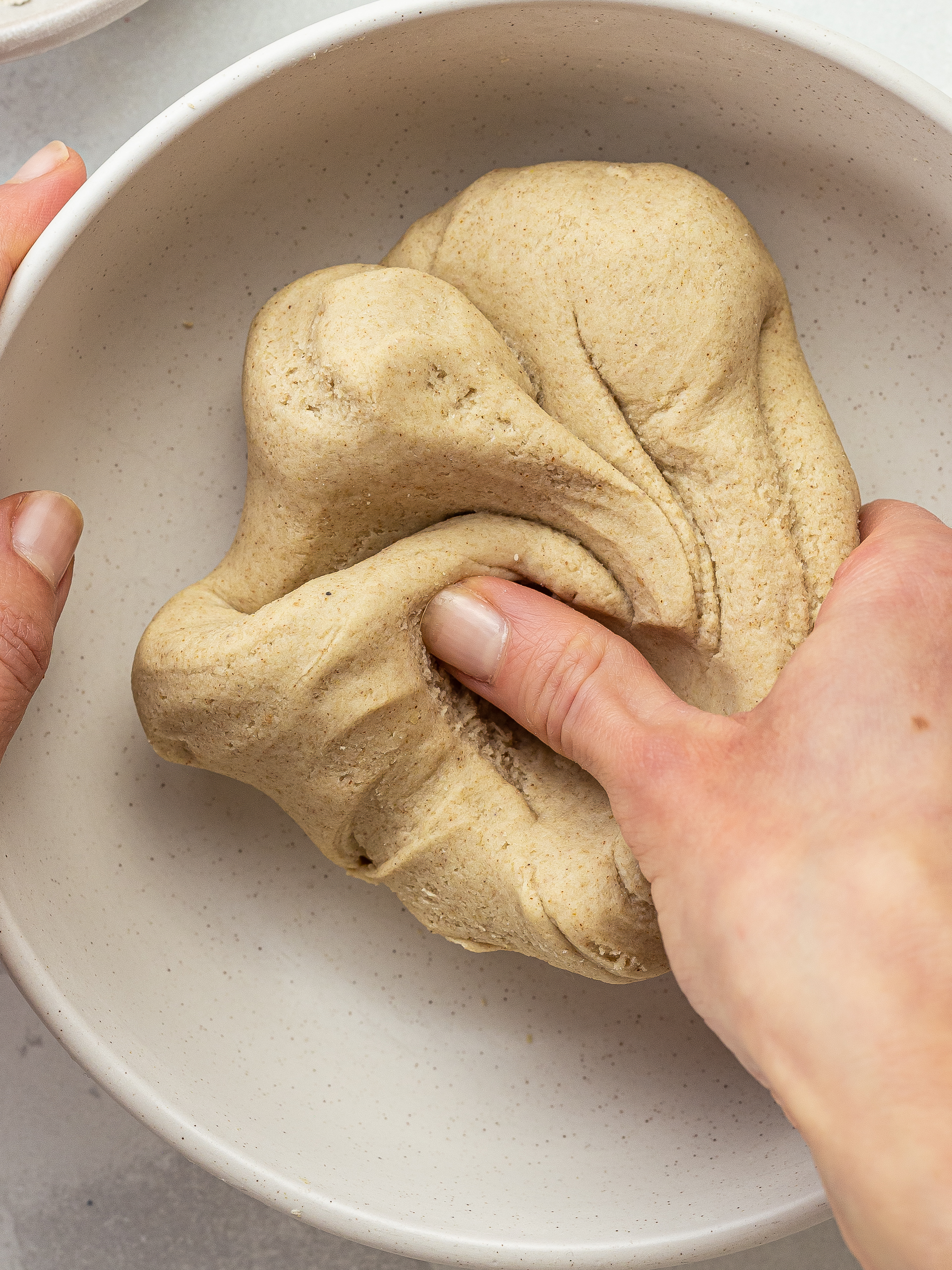
Step 3
Using a rolling pin, roll out the buckwheat dough between two sheets of baking paper to a 2-3 mm thickness — as a thin sheet of cracker dough will cook faster and yield lighter, crispier crackers.
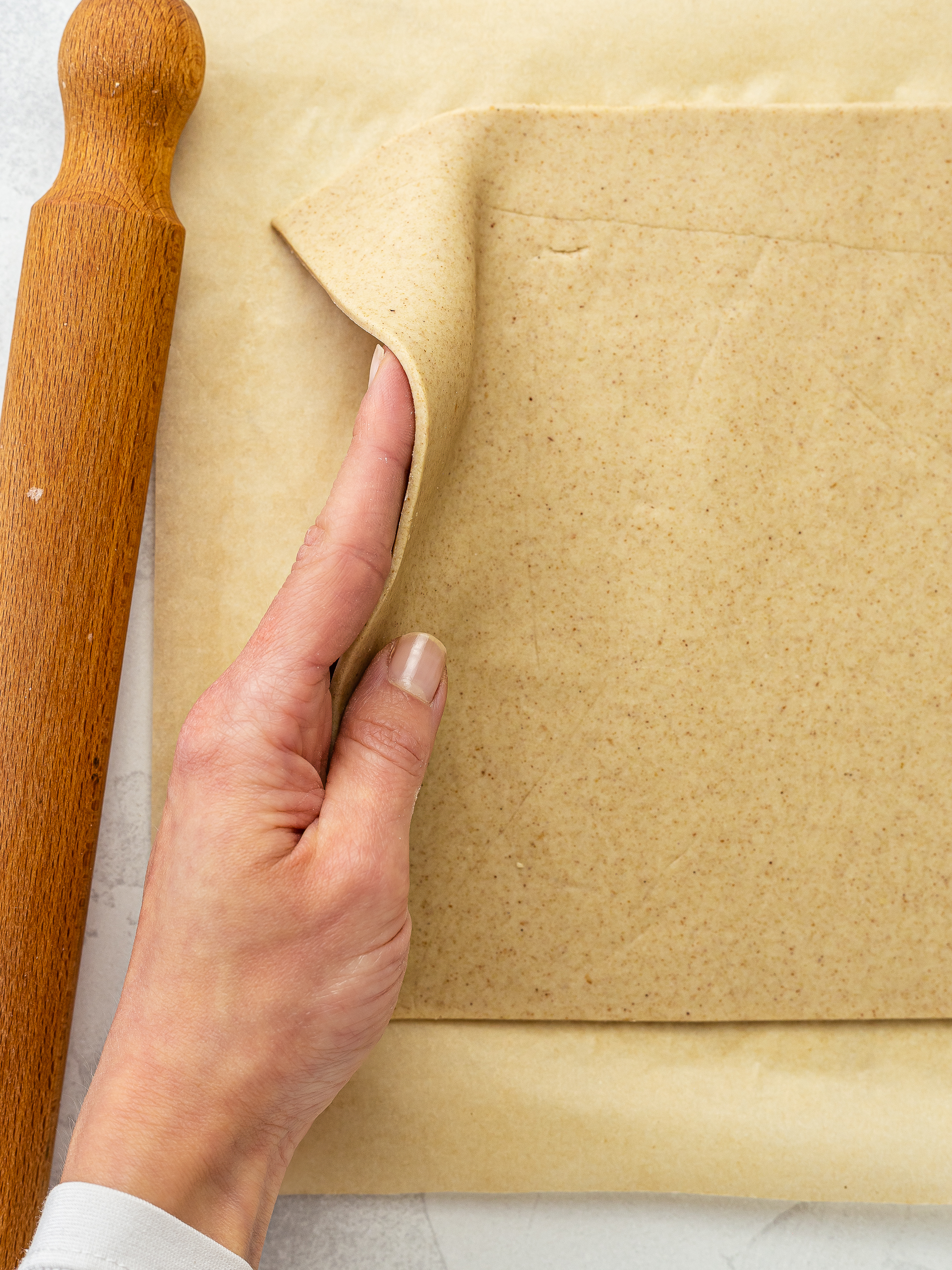
Step 4
If omitting the seeds: use a long knife or a wheel cutter to mark the outline of the crackers and poke the dough with the tines of a fork to allow steam to escape while baking (1).
If using the seeds: first brush the dough with a little water, scatter the seeds over, and press them with a rolling pin. Then, use a long knife to mark the outline of the crackers, cutting through the seeds (2).
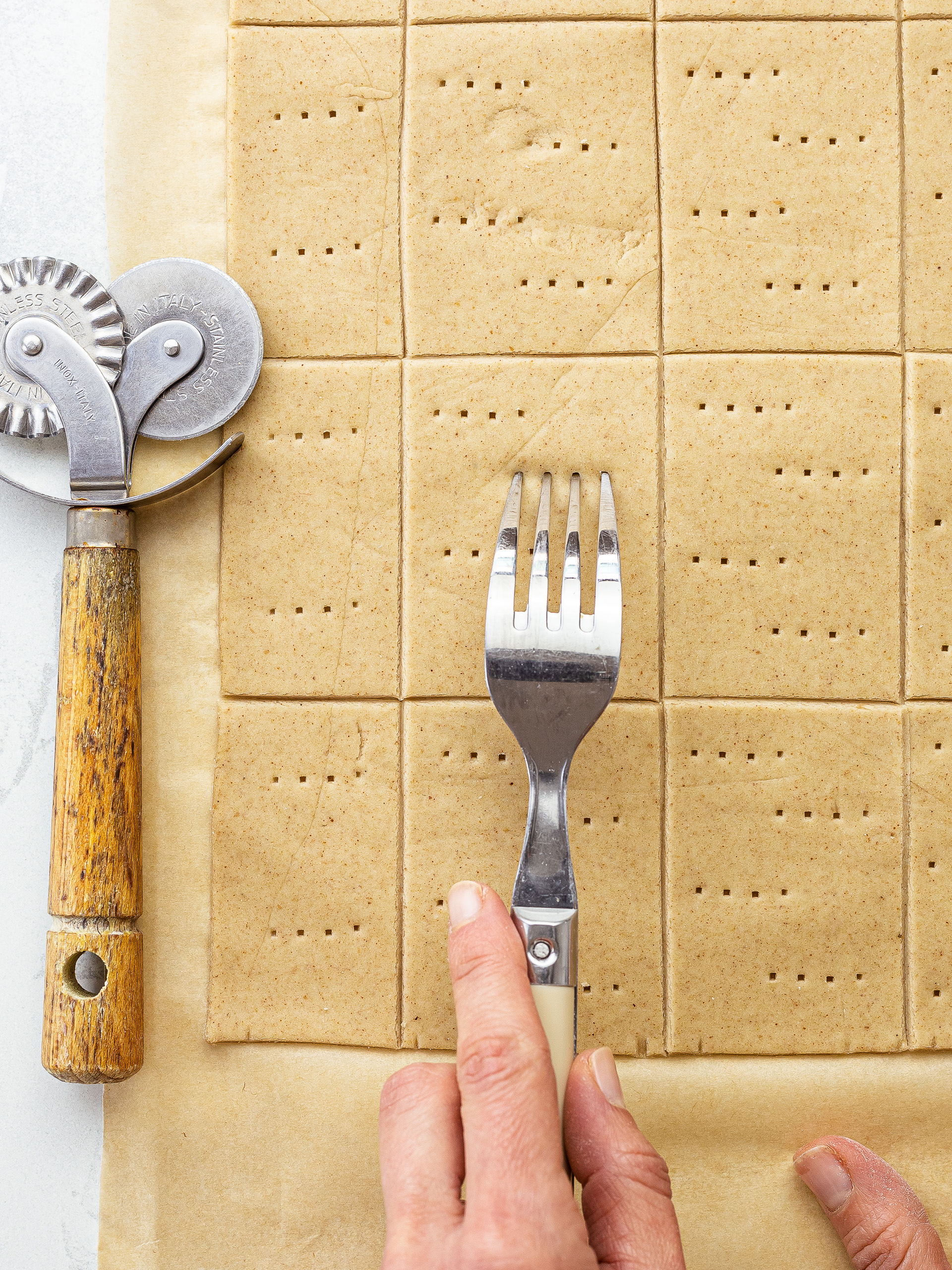
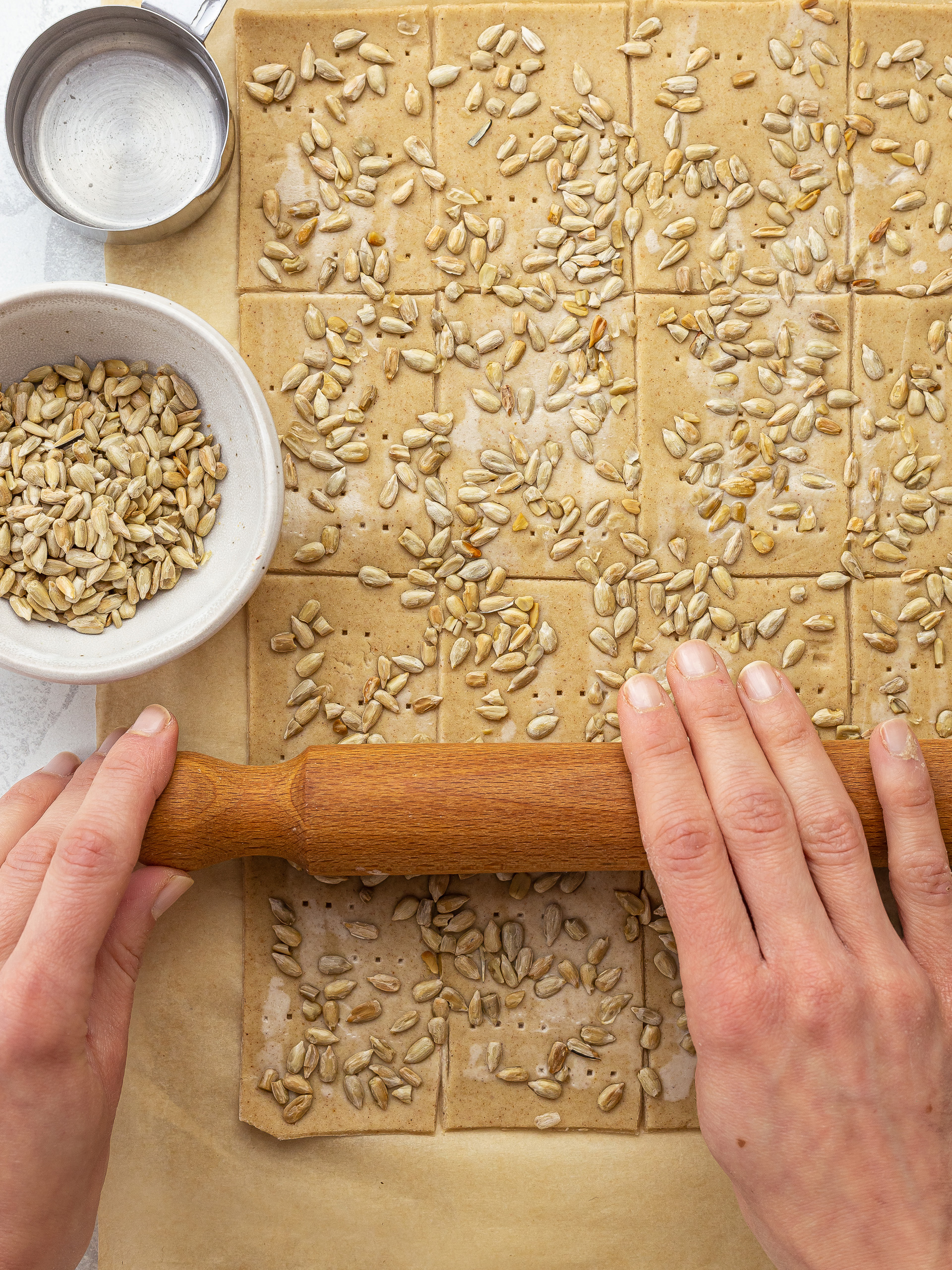
Step 5
Slide the baking paper with the buckwheat cracker dough onto the hot baking tray and bake in the oven for 30-35 minutes.
Halfway through cooking time, rotate the tray to ensure even cooking.
The buckwheat flour crackers are ready when they're firm and dry; they should sound hollow when tapped and snap when cracked.
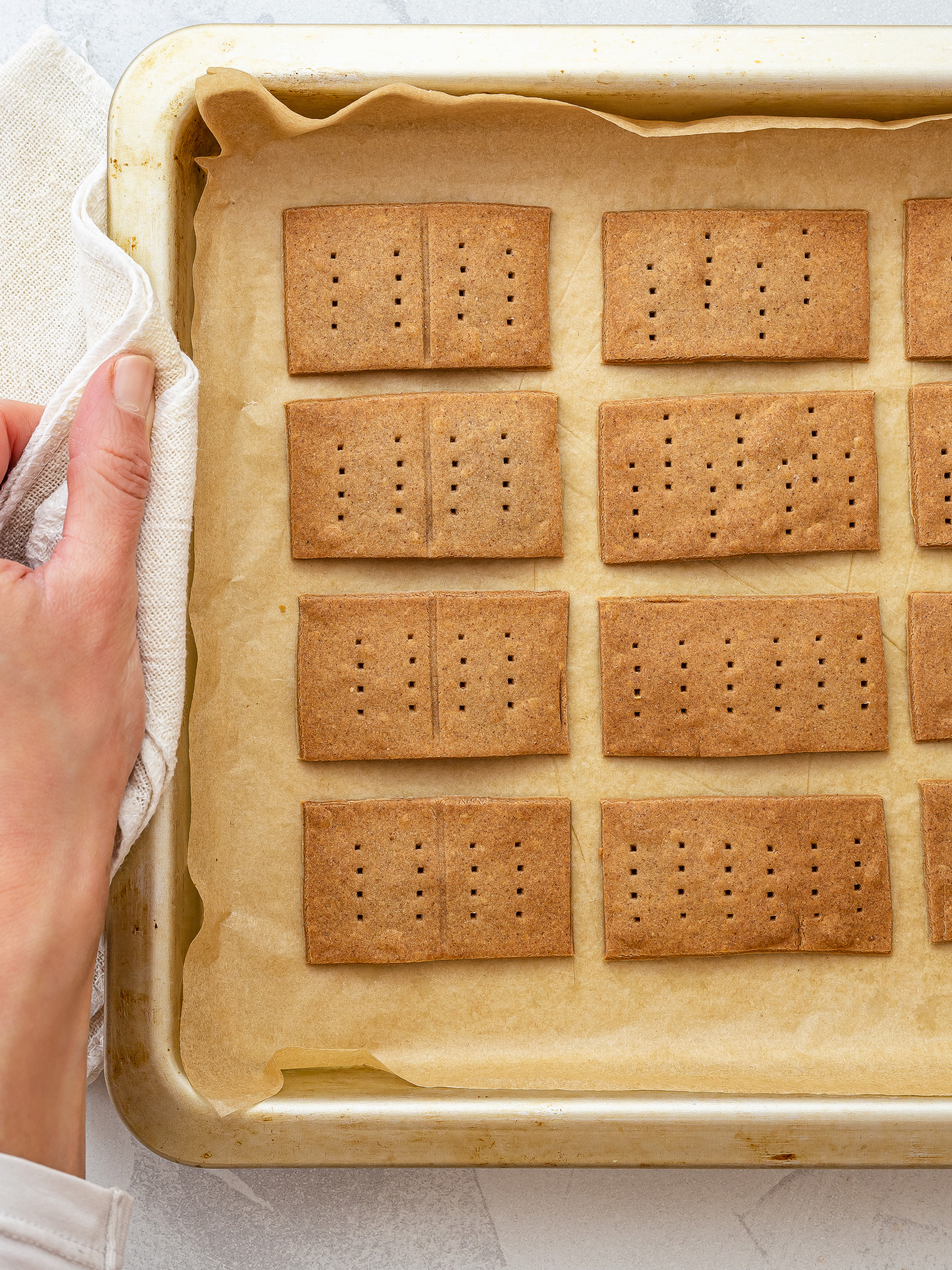
Step 6
Transfer the baked crackers onto a rack, leaving them to cool down completely and crisp up (1).
Your homemade gluten-free buckwheat crackers are ready (2)!
Once cooled, immediately store them in a glass container or jar or tightly wrap them in foil — plastic makes them go stale quickly.
The crackers will keep well for 5 days.
Enjoy these buckwheat crackers on their own or with your favourite dips and toppings — tasty ideas in our FAQ section!
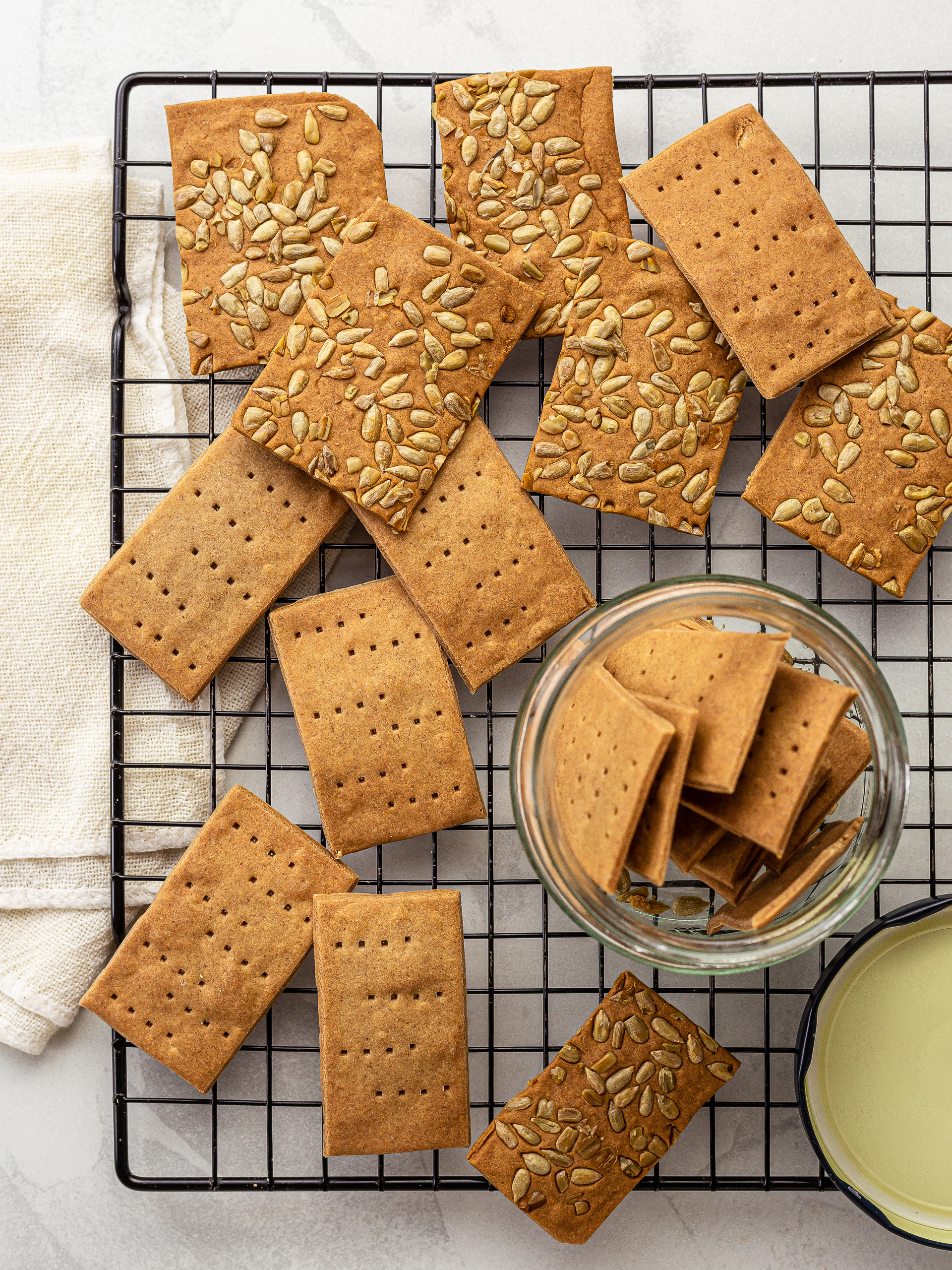
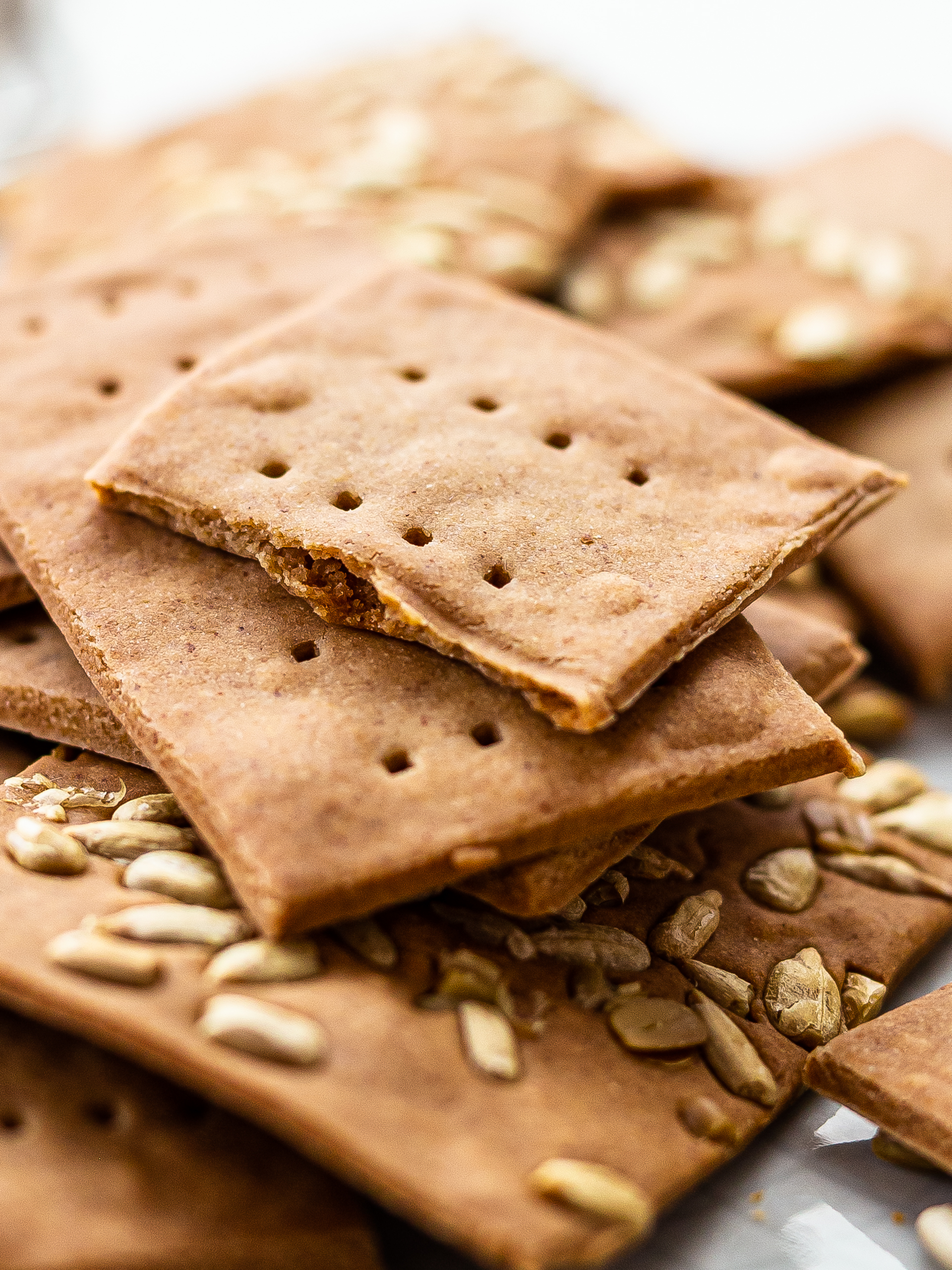
Tips
Cracker size: we made our buckwheat flour crackers 7 x 5 cm (3 x 2 in), but you can make them larger or smaller, square, round or diamond-shaped if preferred.
Cooking on multiple trays: use fan mode in the oven and rotate the trays top to bottom and front to back halfway through baking time for even cooking.
Low-salt option: to make the crackers less salty, reduce the salt to 1/2 teaspoon and add 1 teaspoon of strong dried herbs/spices like rosemary, thyme, or black pepper.
Oil-free option: replace the oil with water and add some toasted seeds/nuts to the dough (chopped or, even better, ground) for richness.
Swaps
You can replace one-third to half of the buckwheat flour with other gluten-free flours like:
brown rice flour for extra fibre
chickpea flour for extra proteins as in these chickpea crackers
almond flour for healthy fats, replacing the oil as in these chia seed almond crackers
black bean flour as in these black bean tortilla chips
